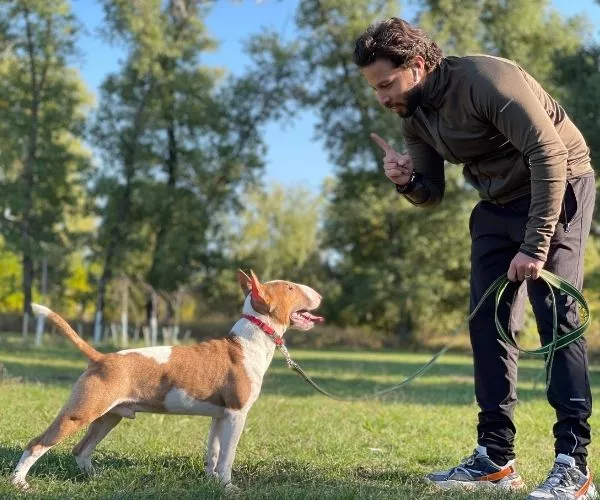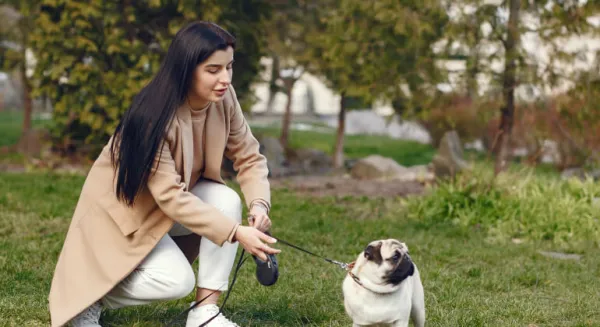Discover the playful, loyal, and unique Bull Terrier. Learn about its history, personality, health needs, and training tips in this complete breed guide
The Bull Terrier is one of the most recognizable dog breeds in the world — not just because of its distinctive egg-shaped head, but also its larger-than-life personality. Known for their playful spirit, loyalty, and occasional stubborn streak, Bull Terriers are charming companions for owners who can match their energy.
Origin and History of the Bull Terrier
The Bull Terrier originated in 19th-century England, developed by crossing Bulldogs with Old English Terriers to create a courageous and agile fighter. James Hinks, an influential breeder, refined the breed by introducing the now-extinct White English Terrier and Dalmatian, giving rise to the “White Cavalier” — a more stylish, show-ready dog. Over time, the Bull Terrier transitioned from the fighting pits to the show ring and family homes.
Physical Characteristics
Size and Build
Bull Terriers are medium-sized, muscular dogs standing about 21–22 inches at the shoulder and weighing between 50–70 pounds.
Coat Colors and Texture
The short, dense coat can be pure white or colored (brindle, black, red, fawn, or tri-color).
The Iconic Egg-Shaped Head
The breed’s unique head is long, oval, and smooth, with deep-set triangular eyes — a look unmatched in the dog world.
Temperament and Personality Traits
Bull Terriers are affectionate, comical, and highly spirited. They thrive on human companionship but can be strong-willed, requiring consistent training. With proper socialization, they’re friendly with children and can live with other pets, though supervision is advised due to their high prey drive.
Health and Lifespan
Common Health Concerns
Deafness (especially in all-white Bull Terriers)
Skin allergies and irritations
Heart disease
Kidney issues
Lethal acrodermatitis (a rare genetic condition)
Preventive Care Tips
Regular vet check-ups and annual health screenings
Early hearing tests for puppies
High-quality diet and joint-supporting supplements
Average Lifespan
Typically 10–13 years, though some may live longer with attentive care.
Grooming and Maintenance
Bull Terriers are low-maintenance in grooming. Weekly brushing keeps the coat clean and shiny, and baths are needed only when dirty. Routine nail trimming, ear cleaning, and dental care are essential for health.
Exercise and Activity Needs
This is a high-energy breed that thrives on daily activity. They need at least 60 minutes of combined physical and mental stimulation — brisk walks, fetch, agility, and puzzle toys are great options.
Training and Socialization
Bull Terriers respond best to positive reinforcement. Begin obedience training early and introduce them to a variety of people, places, and other pets. This helps prevent behavioral issues and boosts their confidence.
Is the Bull Terrier Right for You?
Bull Terriers are ideal for active, experienced owners who have time for training and play. They’re not suited to owners who are away from home for long hours, as they can become destructive when bored.
Fun Facts About Bull Terriers
The Target store mascot, Bullseye, is a Bull Terrier.
They’re nicknamed “the kid in a dog suit” for their playful personalities.
Rufus, a colored Bull Terrier, won Best in Show at Westminster in 2006.
Conclusion
The Bull Terrier is a loving, bold, and delightfully quirky companion. With proper care, training, and attention, they make unforgettable family members who will keep you entertained and active for years.
Frequently Asked Questions (FAQs)
Are Bull Terriers aggressive?
Not inherently, but without proper training and socialization, they may show dominance or territorial behavior.
How much exercise do Bull Terriers need?
At least an hour daily, split between physical and mental activities.
Are Bull Terriers good family pets?
Yes, for active families who can provide structure, supervision, and plenty of playtime.





